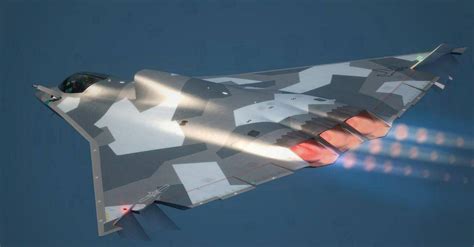
Satellite imagery reveals Russia’s attempts to protect its aircraft from Ukrainian drone strikes using improvised tire armor and decoy jets have proven largely ineffective, exposing vulnerabilities in its defensive strategies at airbases near the Ukrainian border.
Recent satellite images analyzed by experts show that Russia has been placing stacks of tires on top of warplanes in an apparent effort to shield them from Ukrainian drone attacks. This makeshift armor, along with inflatable decoy jets, has been implemented at several airbases, including those near the Ukrainian border, yet the strategy has done little to protect the aircrafts. The images, captured by commercial satellite companies, illustrate the extent to which Russia is improvising to protect its assets, highlighting potential weaknesses in its more conventional air defense systems. Experts suggest these measures are a response to increasingly frequent and damaging Ukrainian drone strikes targeting Russian military infrastructure.
The use of tires as a form of protection first gained attention last year when images showed them being placed on military vehicles. Their application on aircraft is a more recent development, signaling a growing concern about aerial attacks on Russian airfields. While the intention is to provide a cushioning effect against explosive drones, analysts remain skeptical about the effectiveness of this approach. “The tires might offer a minimal level of protection against shrapnel or small drone explosions, but they are unlikely to withstand a direct hit from more sophisticated weaponry,” explained a military analyst.
Adding to Russia’s defensive efforts, inflatable decoy jets have been deployed at some airbases. These decoys are designed to lure Ukrainian drones away from real aircraft, but their effectiveness is also questionable. Satellite imagery indicates that the decoys are easily distinguishable from genuine warplanes, especially at close range. “Modern drones are equipped with advanced sensors that can differentiate between a real aircraft and an inflatable replica,” said a defense technology expert. “While decoys might cause some confusion initially, they are unlikely to provide long-term protection.”
The vulnerabilities exposed by these failed attempts at protection underscore the challenges Russia faces in defending its military assets against persistent Ukrainian drone attacks. As the conflict continues, the reliance on improvised measures suggests that Russia’s existing air defense capabilities are stretched thin, forcing them to seek unconventional and, ultimately, less effective solutions.
Growing Concerns Over Ukrainian Drone Strikes
The implementation of tire armor and decoy jets is a direct response to the escalating threat of Ukrainian drone strikes. Over the past year, Ukraine has significantly enhanced its drone capabilities, enabling it to strike targets deep within Russian territory. These strikes have targeted not only military bases but also oil refineries, power plants, and other critical infrastructure. The success of these drone attacks has forced Russia to divert resources towards defense, straining its military budget and manpower.
The airbases near the Ukrainian border are particularly vulnerable due to their proximity to the conflict zone. These bases serve as crucial hubs for Russian air operations, supporting ground forces and launching air strikes against Ukrainian targets. Protecting these airbases is essential for maintaining Russia’s military advantage in the region. However, the limited effectiveness of the tire armor and decoy jets raises serious questions about Russia’s ability to safeguard these critical assets.
“The frequency and precision of Ukrainian drone strikes are becoming a major headache for the Russian military,” said a security analyst. “They are constantly having to adapt their defensive strategies to counter this evolving threat. The use of tires and decoys is a clear indication that they are running out of conventional options.”
The Effectiveness of Improvised Defensive Measures
The use of tires as armor is not entirely unprecedented in military history. In some conflicts, tires have been used to provide additional protection to vehicles against improvised explosive devices (IEDs). However, their effectiveness against sophisticated drone attacks is highly debatable. Tires are primarily designed to absorb impact and provide cushioning, but they offer limited protection against the destructive power of modern explosives.
In the case of aircraft protection, the tires are intended to deflect shrapnel and mitigate the impact of small drone explosions. However, they are unlikely to withstand a direct hit from larger drones or missiles. The weight of the tires could also pose a risk to the aircraft, potentially damaging the wings or fuselage. Furthermore, the tires could create a fire hazard if they are ignited by an explosion.
The deployment of inflatable decoy jets is a more common defensive tactic. Decoys have been used throughout history to deceive enemy forces and divert attacks away from real targets. However, modern technology has made it increasingly difficult to fool advanced sensors. Drones equipped with thermal imaging and high-resolution cameras can easily distinguish between a real aircraft and a decoy.
“Decoys can be effective in certain situations, but they are not a foolproof solution,” explained a defense technology expert. “To be truly effective, decoys need to be realistic and deployed in a way that mimics actual aircraft operations. Simply placing an inflatable jet on a runway is unlikely to fool anyone.”
The Strategic Implications
The failure of Russia’s improvised defensive measures has significant strategic implications. It highlights the vulnerabilities of Russian airbases to Ukrainian drone attacks and raises questions about the overall effectiveness of Russia’s air defense capabilities. The need to resort to such measures suggests that Russia is struggling to keep pace with the evolving threat landscape.
The inability to adequately protect its airbases could hamper Russia’s ability to conduct air operations in the region. This could, in turn, weaken its military position and make it more difficult to achieve its strategic objectives. Furthermore, the cost of replacing damaged or destroyed aircraft is substantial, placing additional strain on Russia’s already stretched military budget.
“The strategic impact of Ukrainian drone strikes should not be underestimated,” said a military analyst. “They are forcing Russia to divert resources, adapt its tactics, and reconsider its overall military strategy. This is having a significant impact on the balance of power in the conflict.”
Expert Opinions and Analysis
Military analysts and defense experts have expressed skepticism about the effectiveness of Russia’s improvised defensive measures. Many believe that these measures are more symbolic than practical, designed to reassure the public and boost morale rather than provide genuine protection.
“The use of tires and decoys is a sign of desperation,” said a security analyst. “It shows that Russia is struggling to cope with the threat of Ukrainian drone attacks and is resorting to unconventional measures to try to protect its assets. However, these measures are unlikely to be effective in the long run.”
Other experts have suggested that Russia should focus on improving its existing air defense systems rather than relying on improvised solutions. This could involve deploying more advanced radar systems, interceptor missiles, and electronic warfare capabilities. Investing in these technologies would provide a more robust and sustainable defense against Ukrainian drone attacks.
“The key to protecting airbases is to have a layered defense system that can detect and intercept incoming drones before they reach their targets,” said a defense technology expert. “This requires a combination of radar, missiles, and electronic warfare capabilities. Improvised measures like tires and decoys are simply not enough.”
The Broader Context of the Conflict
The use of tire armor and decoy jets is just one aspect of the broader conflict between Russia and Ukraine. The conflict, which began in 2014 with Russia’s annexation of Crimea and support for separatists in eastern Ukraine, has escalated dramatically since Russia launched a full-scale invasion in February 2022.
The conflict has had a devastating impact on both countries, causing widespread destruction and displacement. Millions of Ukrainians have been forced to flee their homes, and thousands of soldiers and civilians have been killed. The conflict has also had a significant impact on the global economy, disrupting supply chains and driving up energy prices.
The conflict is likely to continue for the foreseeable future, with both sides showing little sign of compromise. Ukraine is determined to reclaim all of its territory, while Russia is determined to maintain its control over Crimea and other occupied areas. The outcome of the conflict will have profound implications for the future of Europe and the global balance of power.
FAQ Section
1. Why is Russia using tires on top of its warplanes?
Russia is using tires on top of its warplanes as a makeshift form of protection against Ukrainian drone attacks. The tires are intended to provide a cushioning effect against shrapnel and small drone explosions, mitigating the impact of these attacks on the aircraft. However, experts are skeptical about the effectiveness of this approach against direct hits from more sophisticated weaponry.
2. How effective are the inflatable decoy jets deployed by Russia?
The effectiveness of the inflatable decoy jets is questionable. While they are designed to lure Ukrainian drones away from real aircraft, modern drones equipped with advanced sensors can often distinguish between a real aircraft and a decoy, especially at close range. Decoys might cause some initial confusion, but they are unlikely to provide long-term protection.
3. What does the use of these improvised measures reveal about Russia’s air defenses?
The use of improvised measures like tire armor and decoy jets suggests that Russia’s existing air defense capabilities are stretched thin and may be struggling to adequately protect its military assets. It highlights vulnerabilities in their defensive strategies and indicates a need to supplement conventional defenses with unconventional, though potentially less effective, solutions.
4. What is the strategic significance of Ukrainian drone strikes on Russian airbases?
Ukrainian drone strikes on Russian airbases have significant strategic implications. They expose the vulnerabilities of these bases to attack, raise questions about Russia’s air defense capabilities, and can hamper Russia’s ability to conduct air operations in the region. This can weaken Russia’s military position and impact its strategic objectives in the conflict. Additionally, the cost of replacing damaged or destroyed aircraft places a strain on Russia’s military budget.
5. What are the alternative solutions Russia could implement to better protect its aircraft?
Instead of relying on improvised measures, Russia could focus on improving its existing air defense systems. This could involve deploying more advanced radar systems, interceptor missiles, and electronic warfare capabilities. Investing in these technologies would provide a more robust and sustainable defense against Ukrainian drone attacks. Building a layered defense system that can detect and intercept incoming drones before they reach their targets is key.
Detailed Analysis of the Situation
The situation unfolding in the Russia-Ukraine conflict, specifically Russia’s adoption of improvised defensive measures, merits a deeper analysis to fully grasp the underlying issues and potential ramifications.
Russia’s Defensive Posture Under Scrutiny:
The core issue lies in Russia’s defensive posture, which is increasingly being tested by Ukraine’s evolving drone warfare capabilities. The reliance on tires and inflatable decoys is indicative of a reactive approach, suggesting that Russia’s existing air defense infrastructure is not adequately equipped to handle the persistent and increasingly sophisticated drone threat. This could be due to a multitude of factors, including:
- Depletion of Resources: The ongoing conflict has likely strained Russia’s resources, leading to shortages in advanced air defense systems and manpower.
- Technological Gap: There may be a technological gap between Russia’s current air defense systems and the drones being deployed by Ukraine, making it difficult to effectively intercept and neutralize them.
- Strategic Miscalculations: Russia may have underestimated the capabilities of Ukrainian drones, leading to inadequate investment in air defense infrastructure prior to the escalation of the conflict.
The Impact on Russian Air Operations:
The vulnerability of Russian airbases to drone strikes has significant implications for the country’s air operations. These airbases serve as crucial hubs for launching air strikes against Ukrainian targets and supporting ground forces. If these bases are consistently under threat, Russia’s ability to conduct effective air operations will be severely hampered. This could lead to:
- Reduced Air Superiority: The inability to protect airbases could erode Russia’s air superiority, making it more difficult to control the skies and provide air support to its ground forces.
- Increased Operational Costs: Replacing damaged or destroyed aircraft is costly, both in terms of financial resources and the time required to train new pilots and maintain equipment.
- Strategic Setbacks: The disruption of air operations could hinder Russia’s ability to achieve its strategic objectives in the conflict, potentially prolonging the war and increasing its overall cost.
The Evolving Nature of Drone Warfare:
The conflict in Ukraine is showcasing the evolving nature of drone warfare and its impact on modern military strategies. Drones have become a powerful and versatile tool, capable of conducting reconnaissance, surveillance, and targeted strikes. Their relatively low cost and ease of deployment make them an attractive option for both offensive and defensive operations.
Ukraine’s successful use of drones has forced Russia to adapt its defensive strategies, highlighting the importance of investing in advanced air defense technologies to counter this evolving threat. The conflict is likely to drive further innovation in drone technology and anti-drone measures, shaping the future of warfare.
The Psychological Impact:
Beyond the material damage and operational disruptions, the persistent threat of drone strikes can also have a significant psychological impact on Russian forces. The constant fear of attack can erode morale, increase stress levels, and lead to fatigue and burnout. This can negatively impact the performance of pilots, ground crews, and other personnel, further weakening Russia’s military capabilities.
Geopolitical Ramifications:
The conflict in Ukraine and the effectiveness of drone warfare are being closely watched by military strategists around the world. The lessons learned from this conflict are likely to influence future military doctrine and investment decisions. Countries may increasingly prioritize the development and deployment of advanced air defense systems and anti-drone technologies to protect their critical infrastructure and military assets.
Potential Long-Term Consequences:
The conflict in Ukraine could have long-term consequences for the geopolitical landscape. The success of Ukrainian drone strikes has demonstrated the vulnerability of even well-defended military assets to asymmetric warfare tactics. This could embolden other nations or non-state actors to adopt similar strategies, potentially leading to increased instability and conflict around the world.
Alternative Explanations and Counterarguments:
While the prevailing narrative suggests that Russia’s use of tires and decoys is a sign of desperation and weakness, alternative explanations should also be considered.
- Cost-Effectiveness: Improvised measures like tires and decoys may be seen as a cost-effective way to supplement existing air defenses, particularly in a resource-constrained environment.
- Deception Tactics: The deployment of decoys could be part of a broader deception strategy aimed at misleading Ukrainian forces and diverting their attention from real targets.
- Limited Information: Satellite imagery and expert analysis provide a limited view of the situation on the ground. It is possible that Russia is employing other defensive measures that are not visible in the available imagery.
However, even considering these alternative explanations, the reliance on such unconventional measures raises concerns about the overall effectiveness of Russia’s air defense capabilities and its ability to protect its military assets from persistent drone attacks.
Moving Forward: Russia’s Options:
To address the challenges posed by Ukrainian drone strikes, Russia needs to adopt a more proactive and comprehensive approach to air defense. This could involve:
- Investing in Advanced Air Defense Systems: Prioritizing the development and deployment of advanced radar systems, interceptor missiles, and electronic warfare capabilities.
- Improving Drone Detection and Interception Capabilities: Developing technologies to detect and intercept drones at longer ranges and with greater accuracy.
- Strengthening Airbase Defenses: Enhancing the physical security of airbases by constructing hardened shelters, deploying anti-drone netting, and implementing other protective measures.
- Adopting a Layered Defense Approach: Creating a multi-layered defense system that combines radar, missiles, electronic warfare, and physical barriers to provide comprehensive protection against drone attacks.
- Adapting Military Doctrine: Updating military doctrine to reflect the evolving nature of drone warfare and its impact on modern military operations.
By taking these steps, Russia can improve its ability to protect its military assets and maintain its operational effectiveness in the face of the persistent threat of Ukrainian drone strikes. However, the success of these efforts will depend on Russia’s willingness to invest the necessary resources and adapt its strategic thinking to the evolving realities of modern warfare.
Conclusion:
The satellite images revealing Russia’s improvised defensive measures highlight the growing challenges it faces in protecting its military assets from Ukrainian drone attacks. While the effectiveness of tire armor and decoy jets is questionable, their deployment underscores the vulnerabilities in Russia’s air defense strategies and the evolving nature of modern warfare. As the conflict continues, Russia will need to adapt its defensive posture and invest in more advanced technologies to counter the persistent threat of drone strikes and maintain its operational effectiveness. The lessons learned from this conflict are likely to have significant implications for military strategists around the world, shaping the future of warfare and driving further innovation in drone technology and anti-drone measures.









